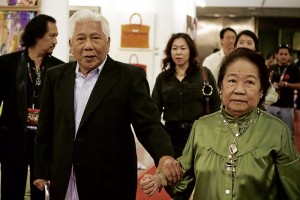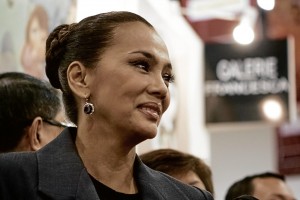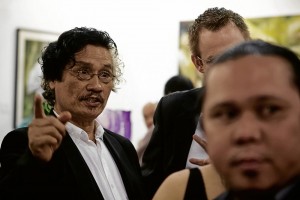
A variety of artworks—from Modern to Contemporary art, from established to new galleries, and from works of National Artists to young and upcoming artists—graced this year’s Manila International Art Fair (ManilArt) last Oct. 3-6 at SMX Convention Center.
Despite the trend of Conceptual art here in the Philippines, a number of galleries displayed Modernists and other art in their booths.
“I feel that the trend [here in the Philippines] has very much to do with figurative art. There have been a lot of strong narratives, installations and conceptual art lately,” said Silvana Ancelloti-Diaz, owner of Galleria Duemila. “We showed a variety but we would like to show the other side and the Modernists.”

Galleria Duemila showcased works by National Artists J. Elizalde Navarro, Ang Kiukok and Arturo Luz along with other masters of Modern art such as Manuel Rodriguez Sr. and Onib Olmedo.
Jack Teotico, owner of Gallery Joaquin, agreed there was a trend toward conceptual art happening in the country.
“You can always say that there is a trend. Contemporary art by its very definition is supposed to be edgy or shocking, something that can call attention. Some of it is based on Pop art and some on street art. I’m hoping to see more installation art in future art fairs,” Teotico said.

However, he added there were still people who looked forward to other forms of art and “art that can be displayed on their walls and is pleasing to the eyes.”
First-timers
Aside from paintings and installations, various galleries also displayed sculptures of Ramon Orlina and Michael Cacnio.
In cooperation with Gallerie Francesca, the works of artist Migs Villanueva occupied one booth. An exhibition of his paintings was titled “Once upon a Happiness.”
Amy Loste, head of the National Commission for Culture and the Arts’ National Committee on Art Galleries, said that heavy rains did not pose a hindrance for art-goers.
This year there were bigger exhibits and the galleries displayed larger pieces. She added there was an increase in the number of young talents at the fair.
“We try to keep up with these talents but they still managed to surprise us,” Loste said. “Out of the 41 participating galleries, a fourth are first-timers in ManilArt.”
Newbies on the ManilArt scene were JIV Manila Art Gallery, Chelra Art Gallery and Fete Gallery.
“We are really happy about this. In the five months that we have been staging exhibitions, we’ve received [favorable] response from the academe, the market and non-art people,” Avie Felix, president of JIV Gallery, said. “We plan to join art fairs abroad, and ManilArt has been a training ground for us.”
Support for art and education
“Many [of the Filipino artists] have great imagination and do beautiful works. I just believe that the government has to give more support, because when these artists go and compete abroad, they need money,” Galleria Duemila’s Ancelloti-Diaz said.
“We [also need] to have better schools in the arts. Filipinos are very talented naturally, but I believe that if you give them better artistic knowledge of the thinking process, they become even better.”
Regarding the status of Philippine art, she said it was doing well so far.
“Art here in the Philippines is booming because of the economy. We go up or down according to the economy. If the economy and the stock exchange go up, we flourish,” she said.
Unsupportive artists
Still, Teotico was dismayed when he didn’t see on display the works of Filipino artists who were making names abroad.
“I am a little sad that we didn’t see the works of many artists being auctioned off here,” he said. “I find it [odd] that we find paintings of these guys in Hong Kong or Singapore but not in Manila. I’m hoping that next year, they’ll think about it, re-evaluate, and they can support their very own.”
Despite this, Teotico was glad works of top Filipino artists were present at the fair, such as Ronald Ventura and RG Habulan.
For the coming years of ManilArt, Teotico is hoping it will occupy a bigger space and the fair would accommodate international galleries.
“Next year, if the venue is bigger, there can be space for international galleries. And if we can do that, even the tourism sector will benefit,” he said. “When we had an art fair in Hong Kong, people flew in from the region and from all over the world.”

